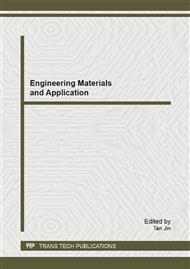p.424
p.430
p.436
p.442
p.448
p.453
p.458
p.462
p.466
Effect of Rotating Tool Electrode on Machining of Titanium Alloy Using Electric Discharge Machining
Abstract:
Electrical Discharge Machining (EDM) is a well established non-conventional machining process used for machining complex and hard material parts that are difficult to machine by conventional machining process. The non-contact machining process has been continuously evolving from a mere tool and dies making process to a micro-scale application machining alternative attracting a significant amount of research interests. In recent years various research have been done to increase the material removal rate (MRR) and reduction in tool wear rate (TWR). Despite a range of different approaches, the objectives of the present work is to achieve more efficient metal removal coupled with reduction in tool wear rate and comparing these values for a stationary electric discharge machine (EDM) and a rotary electric discharge machine (rotary EDM) by using certain parameters for machining of Titanium alloy (Ti6Al4V) work piece and using six different commercially available tools namely Copper, Brass, Tungsten Carbide, Aluminium, Austenitic Stainless Steel 304L and Austenitic Stainless Steel 316.
Info:
Periodical:
Pages:
448-452
Citation:
Online since:
January 2013
Authors:
Keywords:
Price:
Сopyright:
© 2013 Trans Tech Publications Ltd. All Rights Reserved
Share:
Citation:


